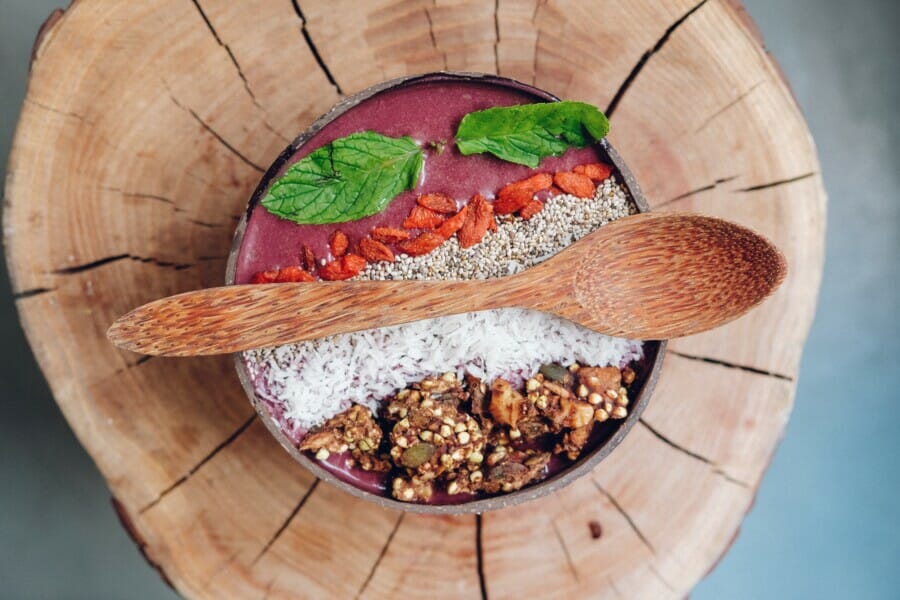Simon Whalley: Six Culturally Unique Breakfasts from Around the World

Photo by Ella Olsson on Unsplash
Breakfast is regarded as the most important meal of the day in most cultures, although what it consists of can vary widely from one region to the next. While the full English breakfast remains a popular treat in the UK, pancakes, bacon, and maple syrup are commonly eaten in America; quite a contrast from the pork, fish, and rice dish preferred in Thailand.
A respected composer and music lecturer who recently served as music director and organist for the renowned Church of Saint Mary the Virgin in New York, Simon Whalley has a passion for travel and enjoys learning more about different cultures. This article looks at six popular breakfast dishes from around the world and the unique traditions behind them.
Acai Bowl – Brazil
Made from a blend of acai berries, banana, frozen berries, and juice, and topped with granola, more fresh fruit, and flax seeds or coconut, this dish’s lead component, the acai berry, has gained notoriety all over the world in recent years, becoming the latest health food craze. Growing in the Amazon, the berry is renowned for its health properties, providing the eater with a big burst of energy. In Brazil, it is sold everywhere, from the beach to the favelas.
The riberinhos people harvest the berries by hand from the treetops deep within the Amazon rainforest. The berries themselves have a creamy, earthy flavor and a granular texture. With a high acidity content, acai berries are quite tart, so they are generally blended with sweeter fruits to make the taste more appealing.
In northern Brazil, acai bowls are commonly served topped with tapioca pearls.
Ful Medames – Egypt
Made with fava beans, chickpeas, lemon, and garlic, and topped with a drizzle of olive oil, tahini sauce, and a sprinkle of cayenne, this dish is believed to be as old as the pharaohs. Although ful medames is a popular breakfast, the Egyptians consume the dish at all times of the day. It is eaten in mud houses in traditional villages, as well as chic city restaurants where it is served as a mezze.
There are many different types of fava bean, all of which can be used to make ful medames. The dish is typically served with hard-boiled eggs or tomato and flatbread.
Nasi Goreng – Indonesia
This fried rice dish is popular throughout Southeast Asia, as well as in the Netherlands, due to the country’s colonial ties with Indonesia. What distinguishes nasi goreng from other Asian fried rice dishes is its distinct smoky aroma and savory-sweet undertones of flavor.
There are many regional variations of this popular dish, with recipes varying widely from one household to the next. Popular components of nasi goreng include bite-sized morsels of meat and vegetables.
Nasi goreng is usually made from rice leftover from the night before, with typical seasonings including chili, spring onions, palm sugar, turmeric, bumbu paste, sweet soy sauce, fish sauce, shrimp paste, and black pepper. Eggs may also be scrambled with the rice during the cooking process. Alternatively, nasi goreng is often served with a fried egg on top.
Chawanmushi – Japan
This savory egg custard dish is served in small individual cups, incorporating a steamed fish cake, shrimp, chicken, and shiitake mushroom medley. The dish is doused with soy sauce, dashi stock, beaten egg, and salt, then steamed.
Chawanmushi can be eaten hot or cold. Translating to English as ‘teacup steam’, it is one of the few Japanese dishes that are traditionally eaten with a spoon rather than chopsticks.
Brown Cheese – Norway
The Norwegians are incredibly fond of cheese, incorporating it into virtually every meal. Brown cheese is a tan-colored whey cheese with a distinctive caramel flavor.
To make brown cheese, water from goat’s milk whey is left to simmer for a long time until the heat gently caramelizes the sugars. As the mixture cools the result is brown cheese, which is typically enjoyed with waffles or crispbread and jam.
Ackee and Saltfish – Jamaica
Ackee and saltfish is the national dish of Jamaica.
Originally brought to the Caribbean by African slaves who wore the seeds as talismans, the ackee tree is the source of one of Jamaica’s most coveted delicacies: a strange-looking fruit that can be lethal if consumed before it is ripe.
Just like the tomato, a type of fruit commonly used as a vegetable, the ackee plays a starring role in a variety of savory dishes. With bright red pods, cream-colored flesh, and black seeds, only the flesh – or arils – are edible, and only when they are ripe.
Incorporating ackee, salt cod, onion, bell pepper, chili, tomato, onion, and thyme, ackee and saltfish makes for a delicious breakfast or brunch and is typically served with avocado.
















